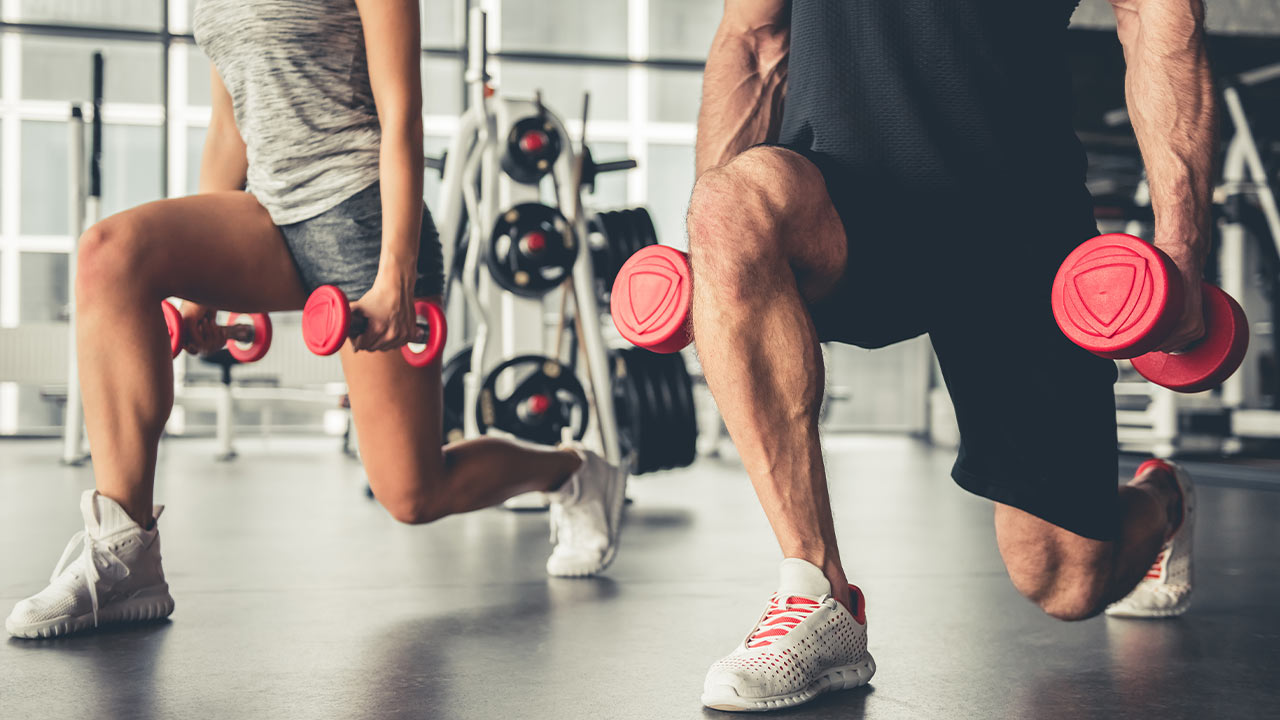The Ultimate Guide to Lunges

Hey Angels and Alphas,
Whether you’re jogging, running, kicking, jumping, or just doing any kind of activity at all, lunges should be an instant add to any male or female fitness program.
The lunge is one of the gold standards in lower-body movements that maps directly to walking and running movement patterns while helping you develop extra mobility and strength in your quads, hamstrings, glutes, your back, your core, and countless stabilizer muscles. It also helps you improve your balance, coordination, as well as unilateral (one-side) strength.
The bottom line is, it’s one of the most functional exercises you can do.
And that’s exactly why there are a bazillion ways to do it, to progress it, change it, modify it, and add extra load. But that also means that are just as many potential wrong ways to do it.
Today, we’re here to provide you with a lunge checklist – while still focusing on the basics, you’ll be able to learn how to use the lunge strategically and use variations of this exercise to achieve specific benefits.
Before you start, here are all the fundamentals of a good lunge:
- Maintain your posture tall and upright throughout the entire movement.
- Engage your core throughout the movement.
- Lower your body in a slow and controlled manner.
- Bend your knees to 90 degrees.
- Your front knee should basically track over your
- Control the movement with your hips, knees, and your ankles.
HOW TO PERFECT YOUR LUNGE:
When it comes to doing a proper lunge, the trickiest part is getting the correct position and maintaining the exact same alignment throughout your movement. To develop the correct lunge form, try a split squat – or a stationary lunge – starting at the ground up.
How to do a split squat:
Start in the half-kneeling position on a floor or a mat. Both your knees should already be bent to 90 degrees and your legs should be about shoulder-width apart. While you’re maintaining a tall, upright posture, you’ll press into both feet and straighten both your legs. Continue this movement by coming to a stand without hinging at your hips and repeat this movement.
ADDING TO YOUR LUNGES
#1 THE WALKING LUNGE
If you’ve already established perfect foot placement and movement patterns in your lunges, you can now begin to fine-tune them using different variations and ways of adding load to the exercise.
When you’ve mastered the mechanics of proper lunges, your first step towards progress should be to do a more functional movement that incorporates walking. In other words, the walking lunge.
Here’s how to do a walking lunge:
Begin with your feet at shoulder-width apart and your hands on your hips or down by your sides. Step with your foot forward, landing in the same position that you otherwise would if you were to do a normal lunge. Lower your left knee until it’s just above the ground. As you usually would, press through with both feet and straighten both legs. Then from an upright position, step with your other foot forward, repeating the process on the other side.
Pro tip: Don’t walk like you would on a balance beam. You can freely place your feet in a staggered line.
#2 THE CURTSY LUNGE
How to do the curtsy lunge:
Begin by standing with your feet about shoulder-width apart and your arms hanging at your sides. Step your left leg behind and outside the right leg. Bend both your knees, lower straight down with an upright posture, and keep your left knee aligned with the middle left toes. When your left thigh is reaching parallel with the floor, then press through both feet and return to your starting position. Repeat on the right side.
#3 THE LOADED LUNGE
The final step in your lunge-learning journey is going to be adding external resistance to your lunges. This is not a necessary step if you’re someone who is not interested in training with weights – if you’re just looking to do bodyweight lunges, that’s fine.
Choose a weight that can challenge you yet allows you to maintain your perfect form (including the bending of your knees, keeping your foot aligned with your toes, and keeping your body straight and upright. Adding this resistance will help you turn this functional movement into a strength-builder that targets all your leg muscles.





